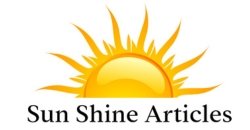Corrosion may significantly impact the durability and safety of materials and products, which is why it is a major problem in businesses worldwide. Particularly in industries like electronics, marine, and automotive, the Neutral Salt Spray Test (NSST) has become a crucial technique for evaluating corrosion resistance. This article will cover everything you need to know about the Neutral Salt Spray Test Chamber, including how it operates, its uses, advantages, and disadvantages, all in an approachable and kind manner.
What is a Neutral Salt Spray Test (NSST)?
Neutral salt spray testing, or NSST for short, is a standardized technique for assessing the corrosion resistance of materials and coatings, particularly metal. With its comparatively easy setup and dependable output, NSST swiftly rose to prominence in the industry after its introduction in the early 20th century. During the test, the material is exposed to high-temperature salt in a controlled environment to replicate the effects of extended seawater conditions.How Does a Salt Spray Test Chamber Work?
The salt spray test chamber is a specialized testing instrument designed to use a fine mist of salt solution to simulate harsh corrosive conditions. This chamber contains essential components e.g.- Atomizing Nozzles: A continuous spray of salt water into these.
- Heating Elements: Make sure the chamber temperature remains stable, usually around 35°C.
- Fog Collection: Measures the amount of spray that will penetrate test samples.
Purpose of Using Neutral Salt Spray Test Chambers
Salt spray chambers are used by industries to assess product durability and find materials that are resistant to extreme conditions. Neutral salt spray testing helps manufacturers make sure their products can withstand real-world circumstances, whether they are testing outdoor electronics, maritime equipment, or automobile parts. How to Perform the Neutral Salt Spray Test Samples are cleaned and placed on non-corrosive supports within the chamber as part of the preparation process. Testing Solution: Under ASTM guidelines, a 5% saline solution is made and atomized. Chamber Conditions: To produce a steady saline fog, the temperature is maintained at 35°C, and the humidity is managed. Exposure: For predetermined periods, sometimes hours or days, samples stay in the chamber.Different Types of Salt Spray Tests
There are several salt spray tests, of which the NSST is only one kind. Other kinds consist of:- For improved corrosion effects, use Copper-Accelerated Acetic Acid Salt Spray, or CASS.
- For anodized aluminum, AASS (Acetic Acid Salt Spray) is frequently utilized.
Materials Tested with Neutral Salt Spray Chambers
Metals, alloys, and coatings are among the materials that are frequently evaluated, including:- Particularly in the automobile industry, steel and aluminum alloys are used.
- Finishes coated with chrome or zinc are examples of protective coatings.
- Check for peeling, bubbling, or fading on painted or anodized surfaces.
Standards for Neutral Salt Spray Testing
NSST techniques are governed by testing standards such as ISO 9227 and ASTM B117 to guarantee uniformity and dependability. Manufacturers who want to fulfill industry standards for product quality must adhere to these guidelines.Environmental Conditions in a Salt Spray Test Chamber
The following are the main prerequisites for a neutral salt spray test:- Temperature: The standard temperature is 35°C.
- Humidity: Maintaining a steady amount of humidity helps to create a consistent salt mist.
How Test Results are Analyzed
Samples are examined for corrosion indications such as rust, pitting, or coating deterioration following a salt spray test. The product’s intended application and the industry standards it must adhere to determine the pass/fail criterion.Advantages of Neutral Salt Spray Testing
There are several advantages to neutral salt spray testing:- Reliable Results: Fast information on how long a product will last.
- Cost-Effective: less expensive than field testing.
- Time Efficiency: Results in days, not years.
Limitations of the Neutral Salt Spray Test
NSST is very helpful, yet it has drawbacks:- Doesn’t Accurately Reflect Conditions in the Real World: it only replicates particular settings.
- Different Metals Corrode Differently: Not all forms of corrosion may be reflected.
Maintenance of a Salt Spray Test Chamber
The salt spray chamber must be maintained for reliable test results. Important actions include:- Regular Cleaning: Avoids accumulation that may influence test results.
- Calibration: Ensuring all parameters fall within acceptable bounds is known as calibration.
Industries that Rely on Salt Spray Testing
Salt spray tests are used extensively by the following industries:- Automotive: For evaluating bodywork and engine components.
- Aerospace: This guarantees that aircraft components don’t corrode.
- Marine: Boat components exposed to seawater are referred to as marine.

